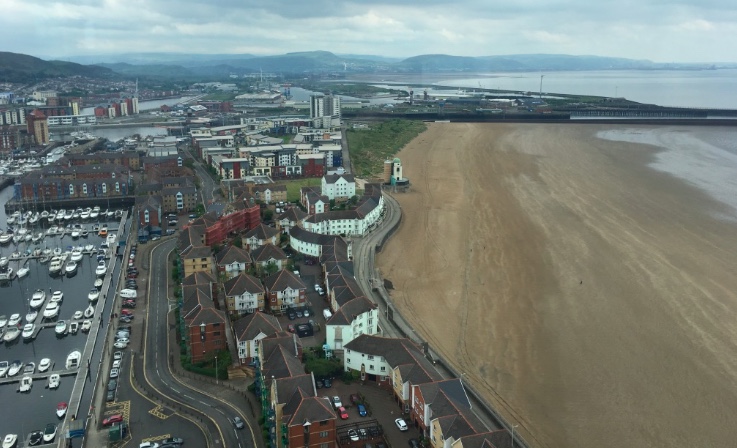If I judge cities by their castles, then Swansea gets a 6/10. The castle gets bonus points for dating from the late 13th century and for having largely evaded Victorian tampering, but loses some points for not being open to the public. The best you can do is walk around the perimeter and peer into the fenced-off tunnel-vaulted basement rooms.
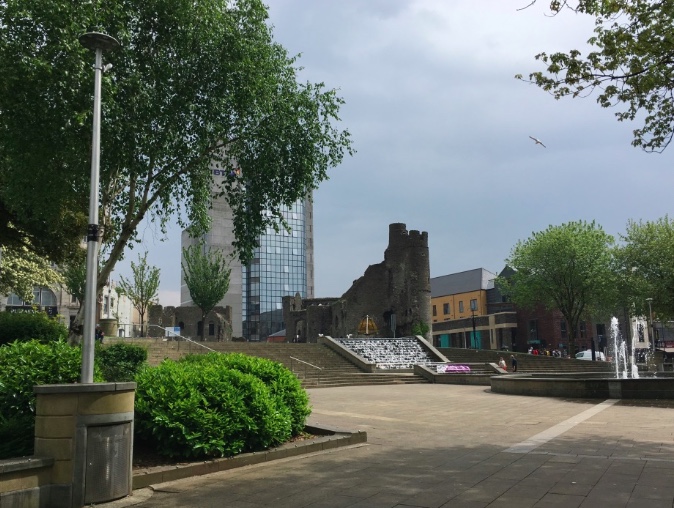
From what I’ve seen, Swansea can’t quite compete with Cardiff for lovely Victorian façades, but some streets, like Wind Street, remind me of the Pioneer District in Seattle:
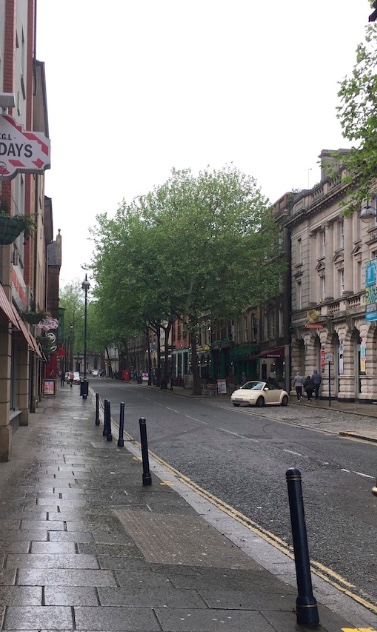
Other bits remind me of Seattle’s waterfront:
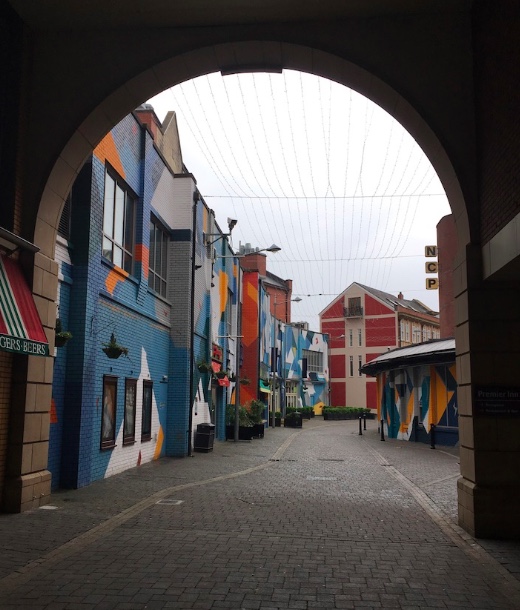

There’s a lovely museum—in this respect, Swansea has Cardiff beat—with a medieval history room. Here’s a tile from a church depicting a jousting knight. The case contains several identical such tiles: in an example of medieval mass-production, these were stamped rather than hand-painted.

And here’s a ewer belonging to Gilbert de Clare (1243-1295). You may remember him. He was called Gilbert the Red (either for his hair or his temper). He got married at the age of ten, built Caerphilly Castle, massacred Jews in Canterbury, joined the Baron’s Revolt and then switched sides, got excommunicated, and picked a quarrel at some point or other with practically every other Marcher Lord in South Wales (and lost to most of them in expensive litigations). Then he died at age 52 and his wife married his squire.
Anyway. This was his, and the inscription says something like “I belong to Gilbert de Clare. Let he who steals me suffer evil.”
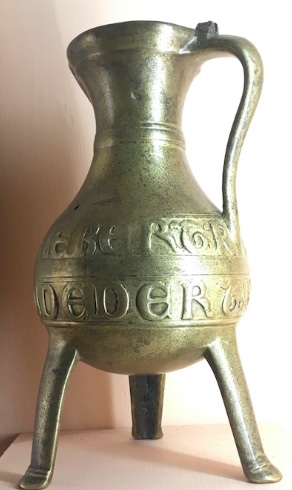
Here’s the view from the sky bar at the top of the tallest building in Swansea:
